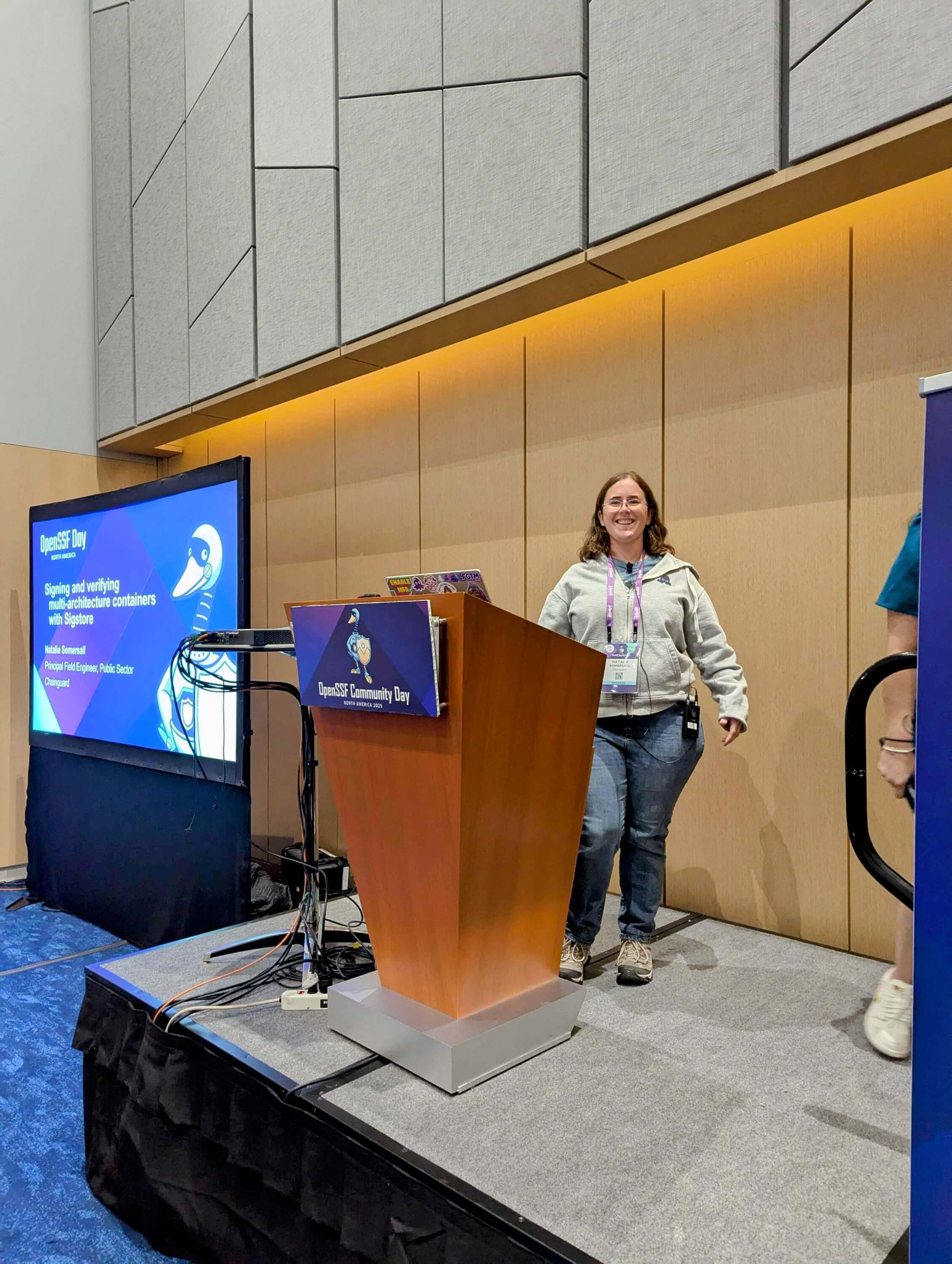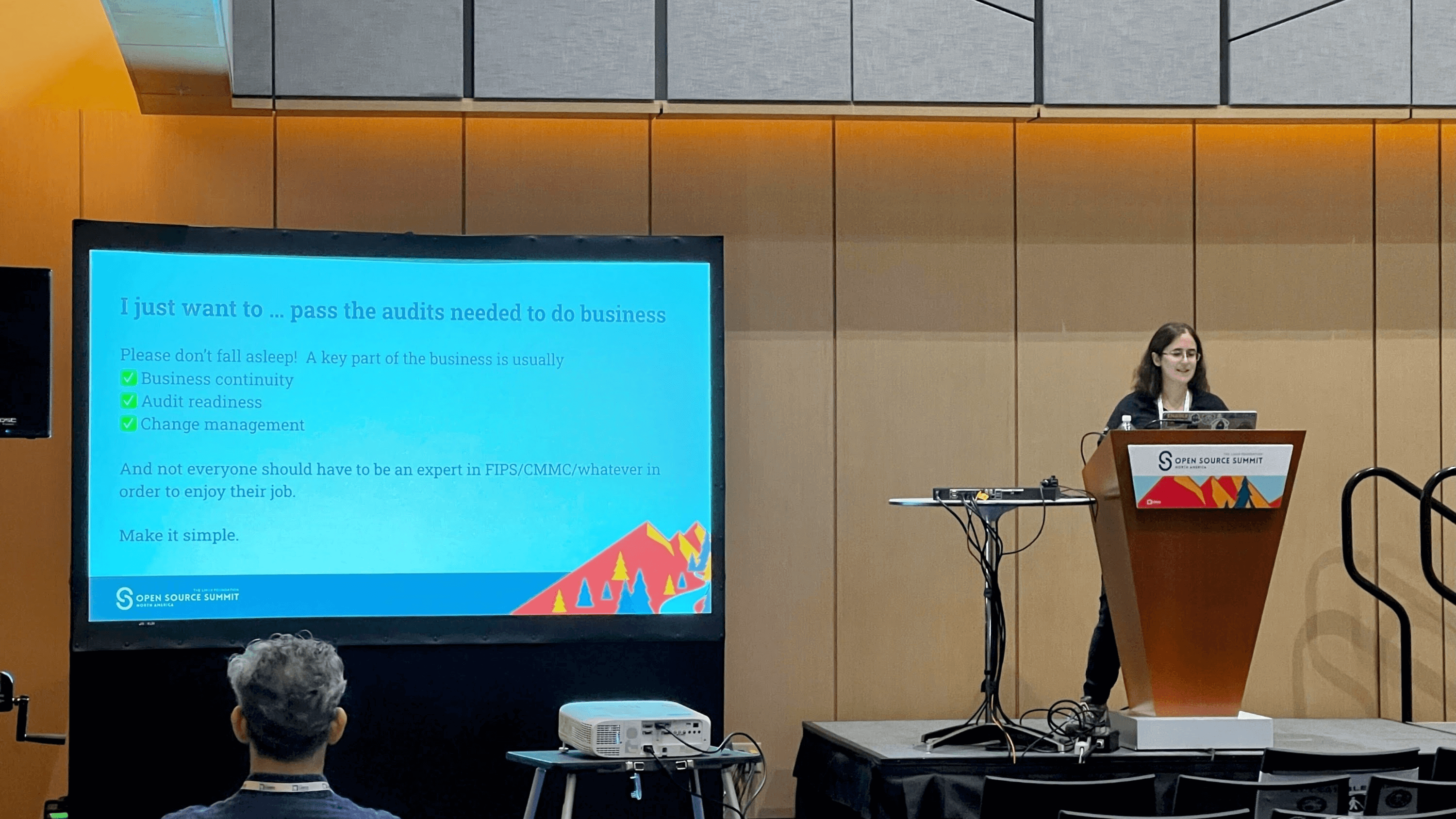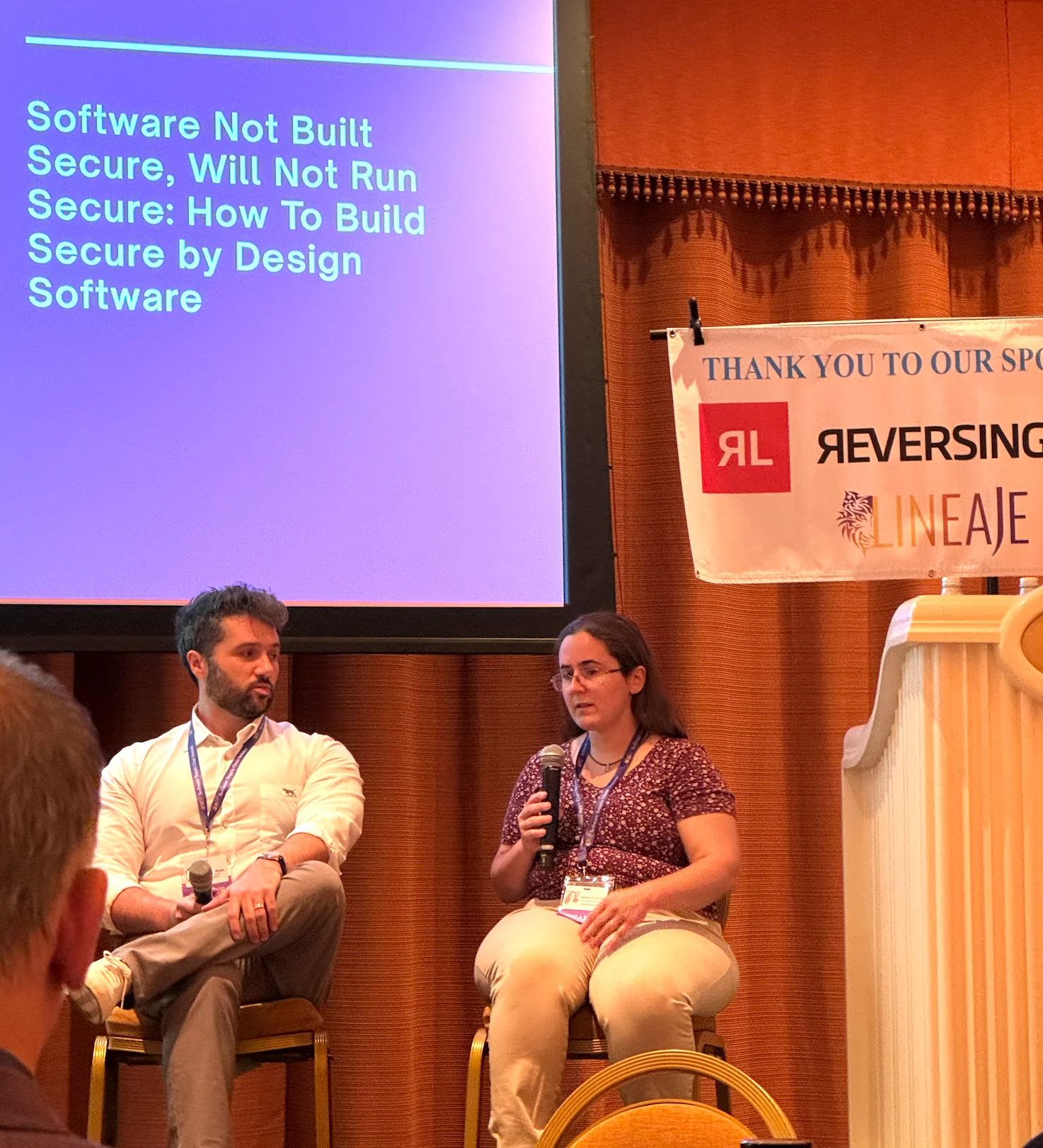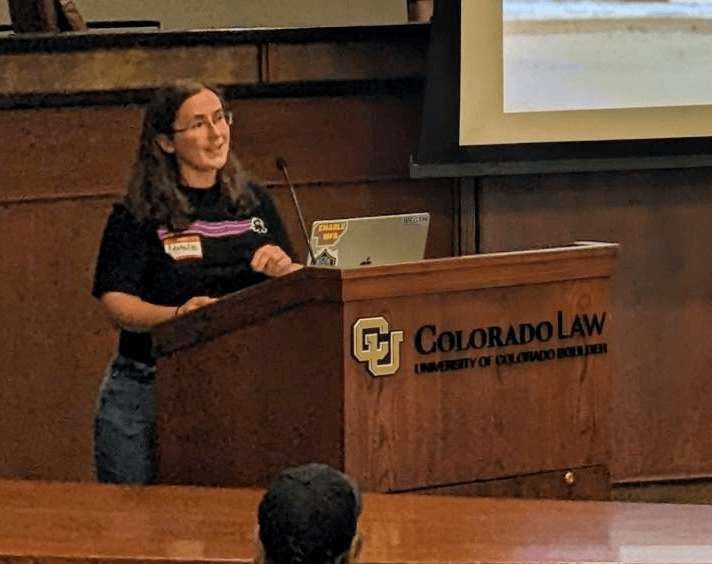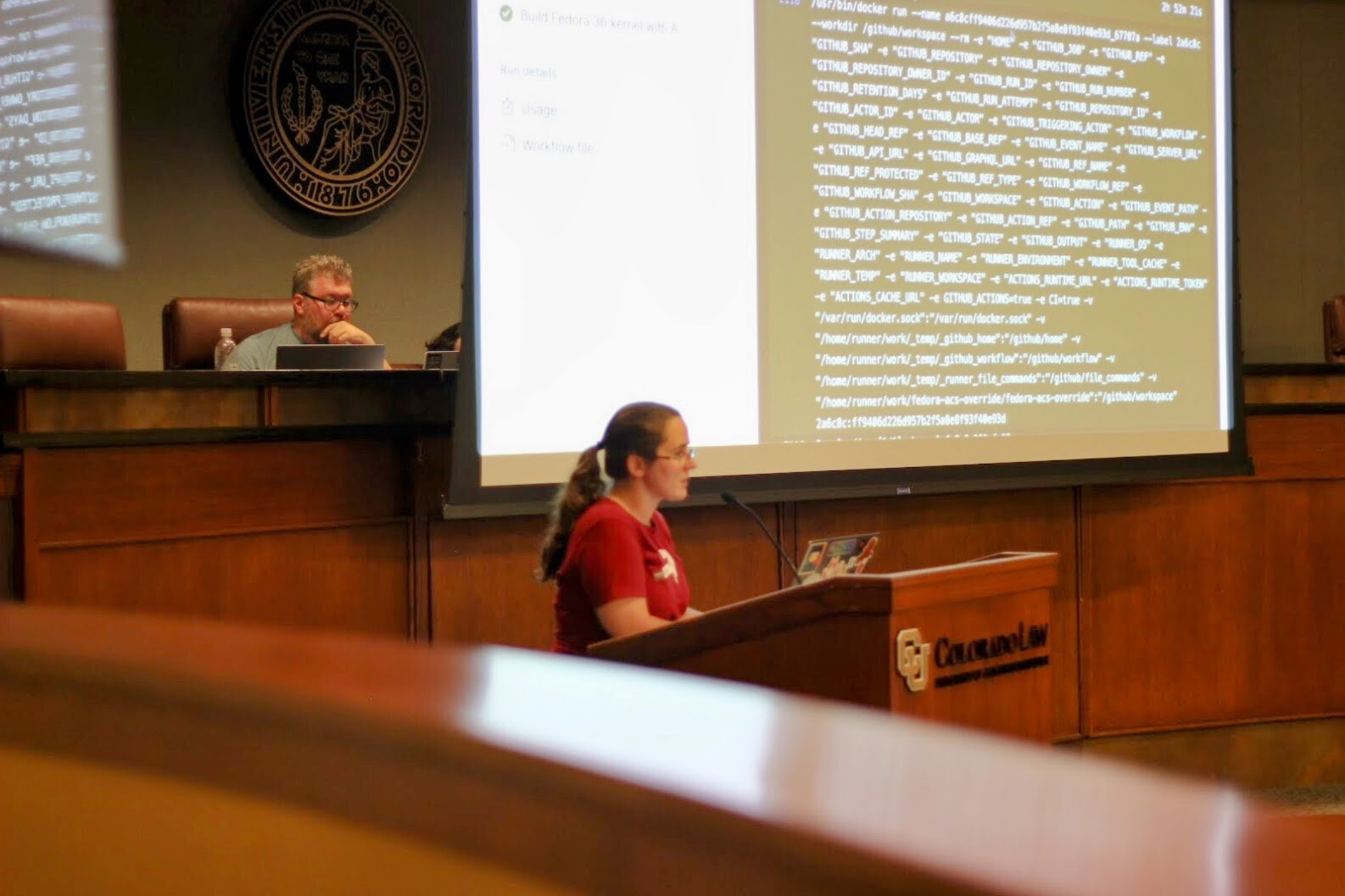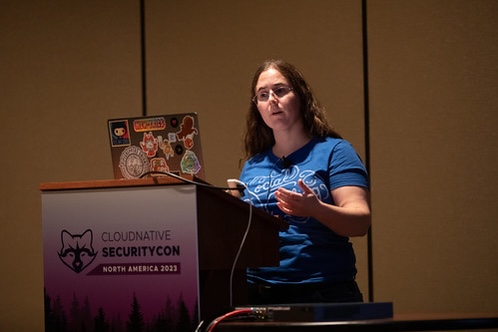Speaking
Natalie is a principal solutions engineer at Chainguard serving the public sector market. She spent years designing, building, and leading complex systems in regulated environments at a major systems integrator, but has also taken her career in many other directions - including detours into project management, systems engineering, and teaching.
She’s passionate about diversity in technology and empowering engineers to build better.
2025
Container Escapes 101
Coming soon! Presenting at AppSec Village @ DEF CON 33
Containers aren’t tiny fortresses. They’re leaky rowboats unless you know what you’re doing. This hands-on workshop demystifies container security layer by layer, showing how real-world missteps in runtime, image, and host configurations open doors to escapes, persistence, and lateral movement. We’ll dissect how containers actually work, walk through common isolation failures, and demonstrate how attackers exploit weak assumptions. Whether you’re building, securing, or regulating containerized apps, you’ll leave with a threat model, practical tools, and maybe a new trick or two for literally popping out of the box.
Signing and Verifying Multi-Architecture Containers with Sigstore
Multi-architecture containers are magical to use - but a bit arcane to work with. Why does docker pull python:3 grab only one architecture? How can we verify that the signed one is in use? In this talk, I’ll demystify how the order of operations for container resolution works. We’ll then dive into OCI manifests, image layers, tags, and how those map to annotations like SBOMs, attestations, and signatures. Using this info, we’ll map out a couple strategies on generating and verifying this information with Cosign regardless of the architecture we need to use. I’ll walk through real-world weirdness I’ve helped folks through managing multi-arch images at scale, including how some registries and pull-through caches behave unexpectedly. This talk is for folks who use containers daily but want to lay the foundation for their software supply chain security.
Presented at OpenSSF Community Day NA 2025 on 26 June 2025 in Denver, Colorado.
Following the Golden Image Road: Best Practices and Pitfalls
The rise of software supply chain attacks, the strengthened security requirements of compliance frameworks, and the speed and complexity of automated software development and build processes have all driven the need for open source standardization, often called Golden Image or Base Image programs.
But while DevOps and security teams recognize how critical open source standardization is, few feel comfortable tackling a large and fragmented challenge like open source software delivery, especially across diverse and disparate mission needs. Let’s share some hard-learned lessons building adoption in a “golden image” program across large, heavily-regulated industries.
Presented at Open Source Summit NA 2025 on 24 June 2025 in Denver, Colorado.
A Gentle Introduction to Container Security
Containers transformed modern application deployment, enabling faster development with portable and scalable systems. They also introduce new security risks that are difficult to navigate, particularly when development teams don’t understand fundamental infrastructure security principles. Having a threat model of containerized applications is critical for developers, security engineers, and policymakers alike. This talk will break down the key security risks at each layer of the container ecosystem while providing actionable insights for assessing and mitigating threats.
Presented at BSides Boulder 2025 on 13 June 2025 in Boulder, Colorado.
- Slides with expanded writeup
- YouTube recording coming soon
Zero Trust isn’t magic - it’s hard work done well every day (panel)
Zero Trust Implementation: Lessons from the Federal Frontlines was a panel session hosted by ATARC at their Public Sector Zero Trust Summit, Spring 2025 . Many thanks to the other speakers, moderators, and attendees for such a great place to trade stories of lessons learned the hard way. 📖
✏️ A quick writeup of a few thoughts from that panel.
2024
Software not built secure, will not run secure (panel)
How To Build Secure by Design Software was a panel session hosted by Lineaje at their Software Supply Chain Security Summit as a companion event to Black Hat USA 2024. The panel opened on the observation that about 70% of corporate software comes from open source software.
Given that so much of your software components aren’t in your direct control, how do you build software to be secure by design?
✏️ A quick writeup of a few thoughts from that panel.
Whodunnit? A Git Repository Mystery
BSides Boulder (14 June) - With all the recent focus on software supply chain security, let’s look at the very far left of this process - how does git know who did what, when, where, and why? (Abstract on Sessionize)
It seems straightforward to assume that you have all of this information in a git repository, but that’s probably not the case. In this talk, we’ll walk through how to determine the answers to each of these questions, edge cases and technical gotchas to watch out for, and why each are important to your company’s security posture. (YouTube recording)
Slides with expanded write-up
- Introduction, threat model, and biases I have
- Configuration matters to consider
- Identity is hard to demonstrate, especially distributed
- Tips for auditing changes in git - some common ways to not prove what happened and other weird conversations
- Time is meaningless and other terrible misunderstandings about how git understands time
- Where to set compliance controls in regulated software developed in git repositories
- Explaining why a code change happened during an audit is really hard to do, and even harder to prove, well after the change was made. Let’s make this reliably simple!
- Why develop when you have to audit explores the business and people complexities on top of this deeply technical problem. Despite all the hardships we’ve reviewed, building software and systems in highly regulated environments can still be rewarding, fast-paced, and fun!
A Gentle Intro to Container Escapes and No-Clump Gravy
PancakesCon 5 (24 March) - Lots of security and sysadmin courses talk about a “container escape”, but what is that really? We’ll go over what a container is, demonstrate how to escape from it, and why that’s not a good thing. Then we’ll talk about common ways to prevent this exploit.
Next, stop ruining your gravy, pan sauces, etc. with clumpy flour or adding so much it becomes solid. Learn how to balance fat and flour for perfect pan gravy, then a couple techniques on how to recover just in case it wasn’t right the first time. 👩🏻🍳
2023
Threat Modeling the GitHub Actions Ecosystem
BSides Boulder (23 June) - A tour through the four questions outlined in the Threat Modeling Manifesto to provide an enterprise-ready threat model for implementing GitHub Actions securely. GitHub Actions is one of the most popular CI tools in use today. If you need or want to use it for business, though, there are a lot of choices to make that have huge implications to the information security and compliance posture of your organization. These questions get harder with more users and projects, moving faster and not prioritizing security.
In this talk, we’ll dive deep into what an Action really is, what goes into an Action out of the marketplace, and how each of the three types of Action can be exploited with a demonstration. With each exploit, a few control strategies will be discussed to counter it.
- Abstract on Sessionize
- Slides, with writeup and links
Securing Self-Hosted GitHub Actions with Kubernetes and Actions-Runner-Controller
CNCF CloudNativeSecurityCon North America (1 Feb) - A deep dive into the security considerations of running self-hosted GitHub Actions compute with actions-runner-controller . We’ll review typical deployment architectures, then cover 3 distinct places where security risk and ease of use collide with insight and resources for navigating these design choices. First the cluster settings are examined to show methods to limit the “blast radius” of a potential bad actor and provide insight into the why and how of using privileged pods. Next, the controller settings are reviewed for how to scope runner deployments and grant permissions within GitHub to provide least-privilege. Lastly, the runner pod is taken apart to show how to build supply chain security into the image and the software it builds for you.
2022
Containerized CI at an Enterprise Scale
Colorado Kubernetes & Cloud Native (21 Nov) - Let’s summarize what to think about as an enterprise moving continuous integration workloads into containers orchestrated with Kubernetes - everything from the benefits and drawbacks of nested virtualization to the how and why of privileged pods - from the perspective of having done the thing a few times over!
- Slides, with writeup and links
Linux Software Packaging, maybe in a nutshell
Boulder Linux/Unix User Group (8 Sept) - A quick tour through the history of packaging software in Linux - moving from compiling it at each computer using it, to RPM and DEB packages, to snaps/flatpaks and containers on the desktop. This was a very interactive demo/talk at about an hour and the conclusion changes every time, but it’s sadly unrecorded.
- Slides
- Makefile example for going through a modestly complex Makefile
- RPM file example walking through the process of building RPMs from the source RPM
- DEB file example walking through the contents and process of building DEBs from a source tarball
2021
Goobernetes
… or building GitHub Actions compute on-premises without (many) tears (14 Oct) at the Boulder Linux/Unix User Group
The above source code repository isn’t maintained. Please look to kubernoodles for a newer take on the same problem.
2020
Getting Started in DevSecOps in a Regulated Environment
DevSecOps Days Denver 2020 (29 Oct) - Natalie has worked with a great number of teams within system integrators as they’ve integrated security into their software engineering processes. Given the opportunity to work with such a diverse group of teams, she’s found a couple of common traits in teams that thrive in delivering secure software in a regulated environment.
